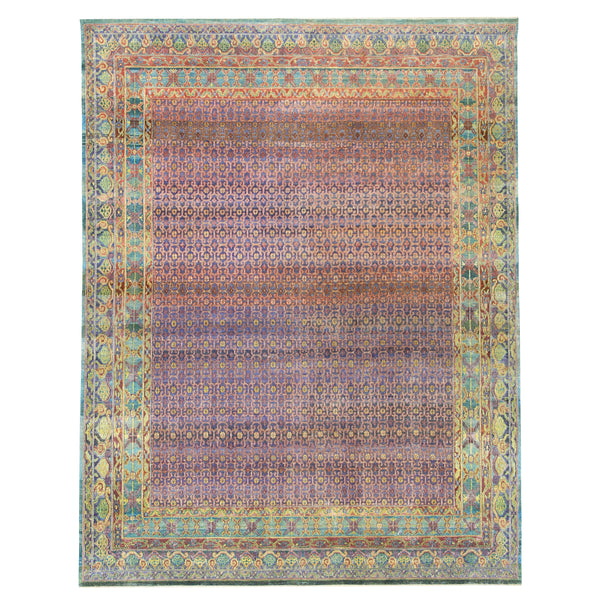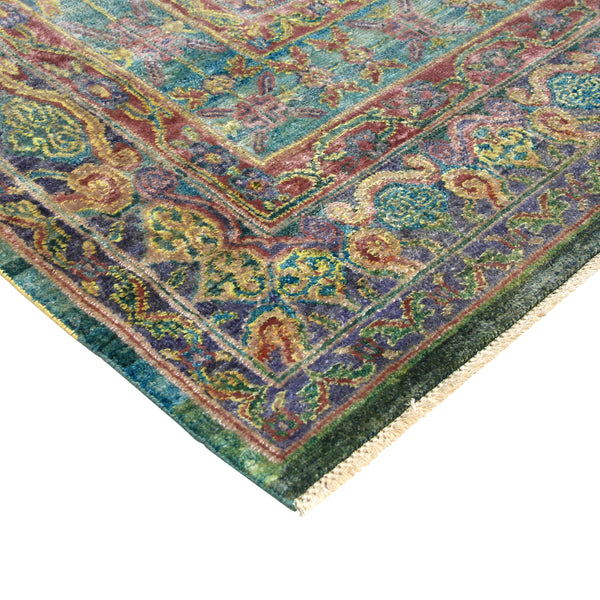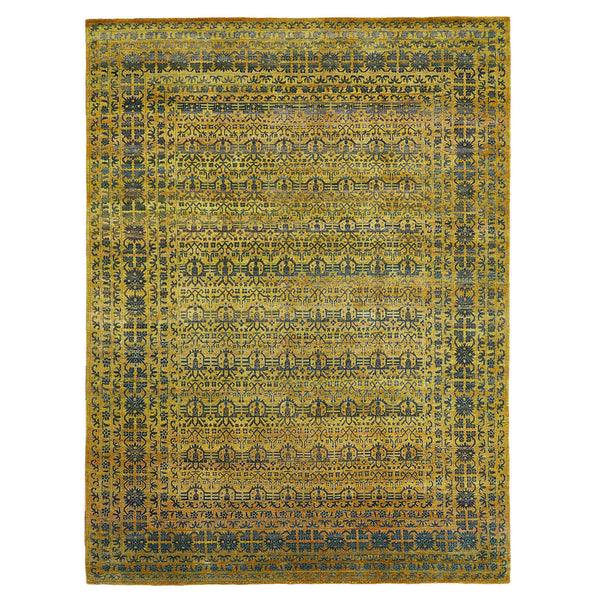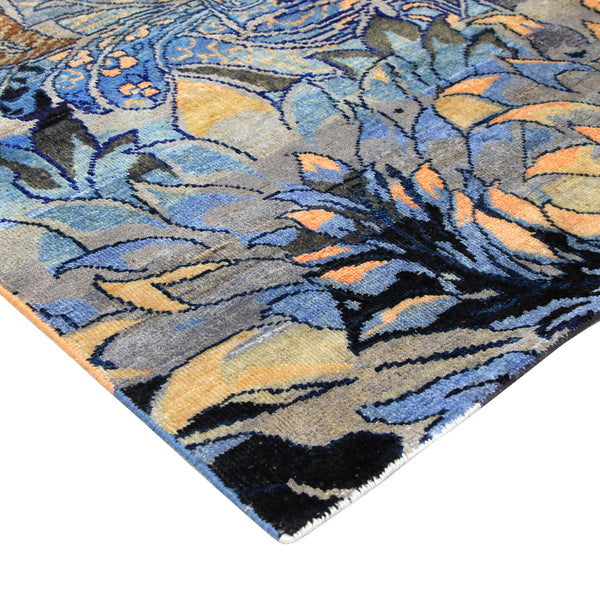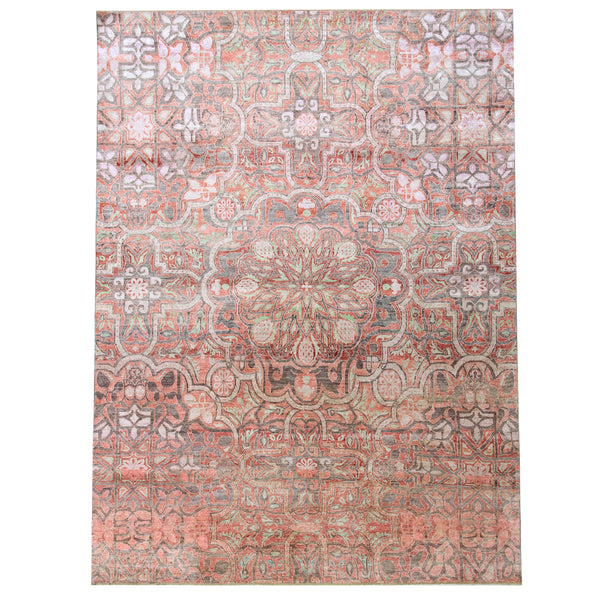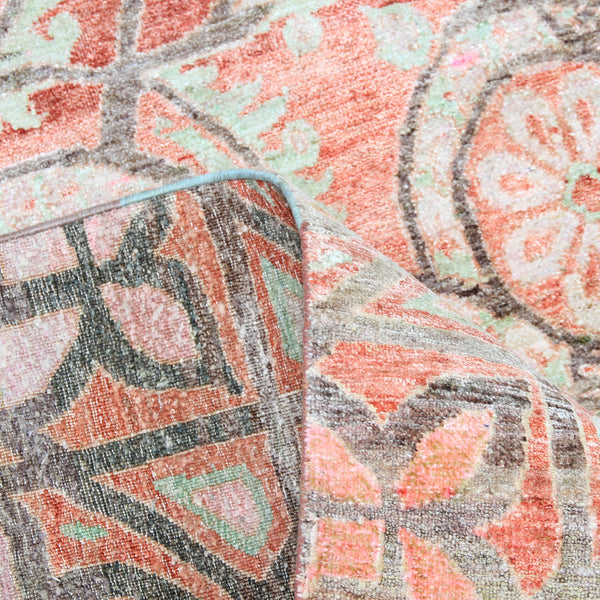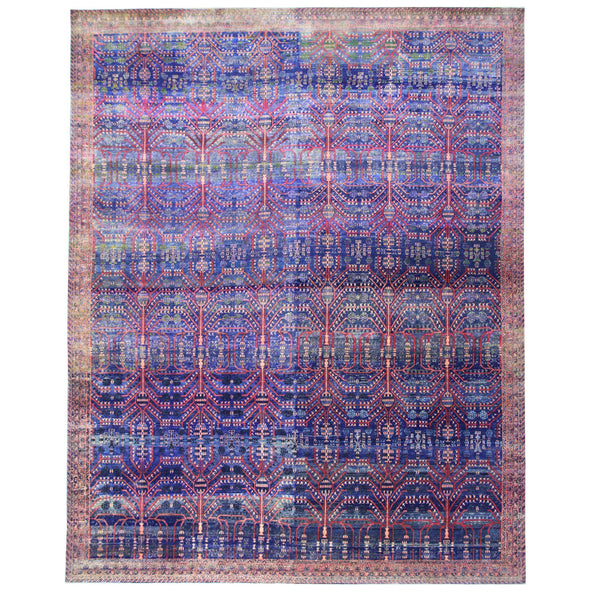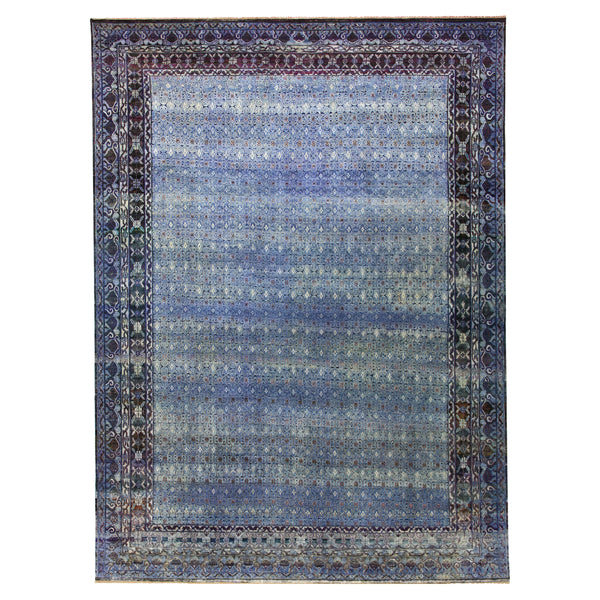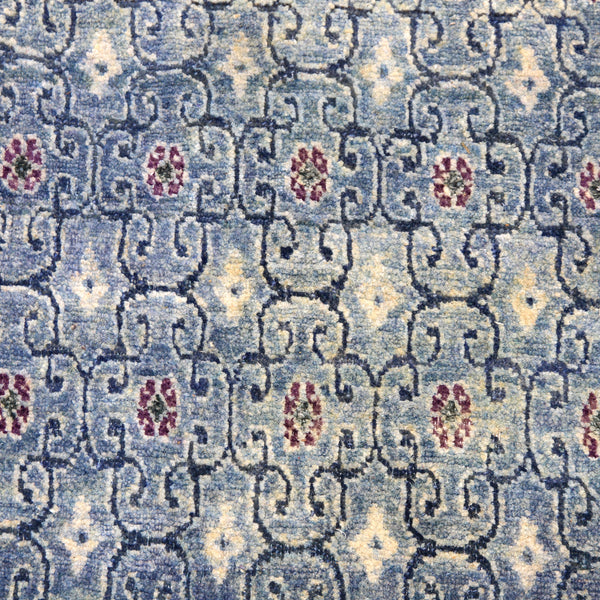Buying an antique rug can be intimidating. With a vast variety of origins, construction methods, weave types, materials, and processes, it's important to have a base level of knowledge about handmade rugs prior to purchasing your one-of-a-kind heirloom.

Although it may be easier to purchase a machine made rug, it's important to remember the beauty within handcrafted carpets and rugs. Visually stimulating and full of variances just like nature, handmade rugs possess a depth that cannot be mastered with a machine.
Here at abc, we embrace and foster the beauty of one-of-a-kind rugs through our vast collection and experienced sales staff that will help you find your perfect handmade rug. We hope this short introduction to the magic of rugs helps you learn more about construction, materials, dyeing, washing, and weaving.

Construction
Construction of a handmade rug begins with knot count and weave type. Often referred to as quality, stitch, or knot count, this measurement describes the density of the fabric. Next is the weave which describes the technic used to create the rug. Some examples of weave types include Kilim, Turkish Knot, Tibetan Knot, Soumak, and Persian Knot.
Within the different weave types, the fibers are woven in a variety of warp and weft to create a variety of different patterns. Warp fibers are strung in vertical directions from fringe to fringe. Weft fibers are woven horizontally through the warp fibers. Below are a few common knots featured in handmade rugs.

- Classic Knot (Persian and Turkish): These traditional knots in rug making are dimensional and knotted around pairs of weft to create a durable and stable foundation. The typical speed of this production type is 4 to 9 months depending on the quality and design. Persian knots are asymmetric and Turkish knots are symmetric.
- Tibetan Knots: Crafted with the use of a rod, both long pile and cut pile are possible using this creation method. Tibetan knots create an incredibly soft feel and silky appearance.
- Flat weaves: Often called kilim and durries, these rugs are created with a warp/weft construction with no knots. Using either a ground or vertical loom, weft yarn is passed between warps for a fast production.
- Sumac: A hybrid between flat weaves and hand knotting, these rugs are created when yarn wraps around warps to create a flat stitch that is durable and quite quick to produce.
- Tufted: Created using a hand-tufted gun, yarn is inserted into a pre-woven backing cloth and glued in place with latex. Using this method, loop and cut pile are both possible.

Materials
Rugs and carpet can be made out of a variety of materials, as well as, a mix of materials to create a unique blend of fibers. Below is an outline of some of the most common materials used in rug and carpet creation and their benefits.

- Wool: A natural fiber that is easy to clean and comes in a variety of natural colors from cream to brown that can be easily dyed.
- Silk: Easily cleaned with water, this material is naturally a cream color that can be bleached to be white or dyed in a variety of colors.
- Silk Substitutes: Typically dry clean only, this material is semi cleanable and pure white in its most natural form. Silk substitutes are viscose, rayon, bamboo silk, and cellulose.
- Natural Fibers: True to its name, this material is often a natural beige tone but can also be bleached. There is high variation in this material's color due to seasonal harvesting and environmental effects. Natural fibers are jute, hemp, linen, sisal, and sea grass.
- Synthetic Fibers: Very cleanable and stain resistant, these artificial fibers are waterproof and highly durable making them ideal for indoor/outdoor spaces and high traffic areas. Synthetic fibers include nylon, shiny nylon, PET yarns, and acrylic.

Method of Dyeing
Due to its handmade nature, beautiful irregularities are revealed in handmade rugs through natural dyeing and color variations of seasonal harvests. Vegetable dyes are the most common in antique rugs and one-of-a-kind rugs.
- Level Dyeing: A dyeing technique that leaves a more consistent, formal color — level dyeing is smooth because of water circulation as the dye sets into the fibers.
- Abrash Dyeing: Abrash is a variation in the deviation of color within an antique rug that creates a strong contrast between more colorful areas of the rug. Variation occurs because there is no water circulation during dyeing, as well as, aging of the fibers, temperature at the time of dyeing, and release of color over time.


